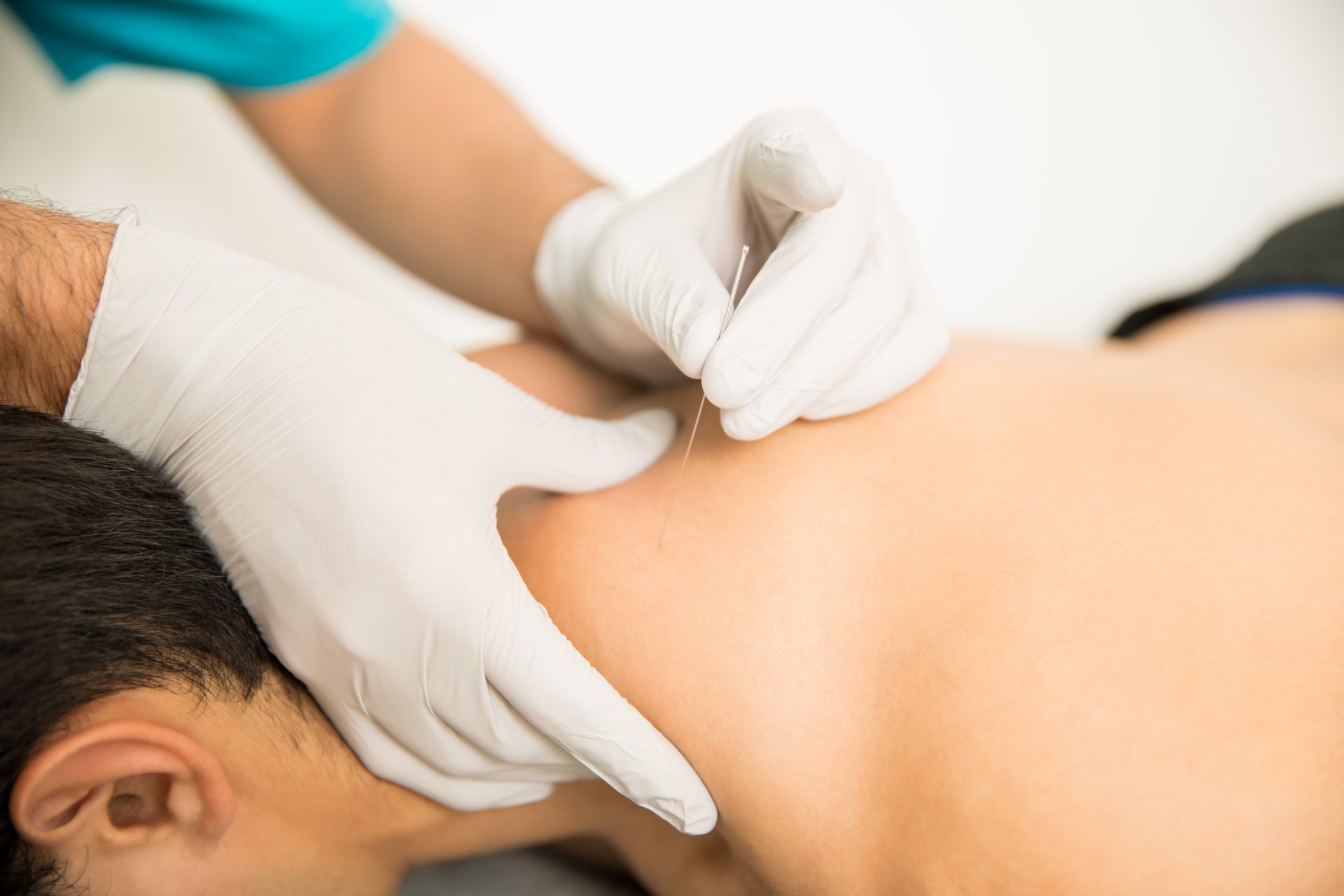Dry needling is a technique used widely by physiotherapists around the world to treat muscle aches and pain.
You may have heard of this technique before but been unsure of whether or not it’s right for you.
How does it work? Will it hurt? Is that the same as acupuncture?
These are common questions asked by patients when dry needling is suggested as treatment.
Read on to find out the answers to these questions and familiarise yourself with the technique so that the next time it is recommended, you won’t hesitate to try it!
What are myofascial trigger points?
A very important factor in understanding the process of dry needling is to know a little bit about the muscles and what is causing the pain.
Myofascial trigger points are defined as ‘a hyperirritable spot in skeletal muscle that is associated with a hypersensitive palpable nodule in a taut band’ (Dommerholt 2006).
What this means is that a trigger point is an area in a muscle that is overactive and very sore to touch.
You can feel the spot as a small lump – commonly referred to as a muscle ‘knot’.
These trigger points occur commonly in middle aged women and sedentary workers and often in the postural muscles of the neck, shoulder girdle, pelvic girdle and jaw (Ruscoe 2013).
There are several ways that trigger points can occur, these include:
- Trauma to the muscle
- Direct blow to the muscle
- Sudden strain injury
- Prolonged immobilisation
- Keeping the muscle still for a length of time – such as wearing a cast or sling
- Unaccustomed activity
- Doing things that your muscles aren’t used to – such as a new workout or a big day of gardening
- Excessive cold, heat, damp or draughts
And in addition to causing pain around the area of the trigger point, they can also refer pain to other areas of the body not associated with the muscle itself.
Sometimes this can be a bit confusing.
For example, you’ve got an ache in the back of your arm – you massage it, put some heat on it, do some stretches and it just won’t get better.
It might not be improving because the discomfort is actually coming from a muscle on the back of your shoulder blade which is referring pain to the back of your arm.
You need to treat the muscle on the back of your shoulder blade in order for the pain in the arm to go away.
Where did dry needling come from?
Dry needling has been around since the 1940s but only really became popular in the early 2000s.
In the 1940s, Dr Janet Travell introduced the term ‘dry needling’- using a hypodermic needle without injecting any substances.
In 1979, Dr Karel Lewit reported pain relief by stimulating trigger points with both hypodermic and acupuncture needles and then in 1989, both Dr Chan Gunn and Dr Peter Baldry abandoned the hypodermic needle and adopted the acupuncture needle that we know today (Ruscoe 2013).
Dry Needling vs acupuncture
The technique involved with dry needling is inserting an acupuncture needle into the trigger point in the muscle.
These needles are incredibly thin with a diameter of about 0.3 of a millimetre.
The needle is inserted deep into the muscle which causes a local twitch response.
This is the muscle quickly contracting and relaxing.
This can cause the muscle to ache and you may also feel the area of pain referral.
Commonly you may feel a slight increase in muscle pain for the next 24-36 hours as the muscle continues to release.
This is in comparison to the traditional Chinese medicine acupuncture which is based on inserting the needles into specific points in the body to allow the free flow of energy (known as ‘qi’) through the body.
This free flow of qi allows the balance between yin and yang.
how to get the most from dry needling?
Finally, in order to get the maximum affect from the dry needling, there are things that you need to do outside of your physiotherapy session.
This includes using warmth (such as a heat pack) and stretching.
It is also important to strengthen the affected muscle and correct posture to prevent the trigger points from coming back.
Next time your muscles feel achy or knotted up, chat to your local physiotherapist to seeing if dry needling might be appropriate for you.
References
- Dommerholt, J., Bron, C. & Franssen, J (2006). Myofascial Trigger Points: An Evidence-Informed Review. The Journal of Manual and Manipulative Therapy. 14(4) 203-221. Retrieved from http://www.maneyonline.com/doi/abs/10.1179/106698106790819991
- Legge, D. (2014) A History of Dry Needling. Journal of Musculoskeletal Pain. 22(3) 301-307. DOI: 10.3109/10582452.2014.883041
- Ruscoe, G. (2013). Acupuncture, Muscles and Pain. Acupuncture, Muscles and Pain Course Reader (pp 8-20). Osborne Park Hospital, Perth, WA

